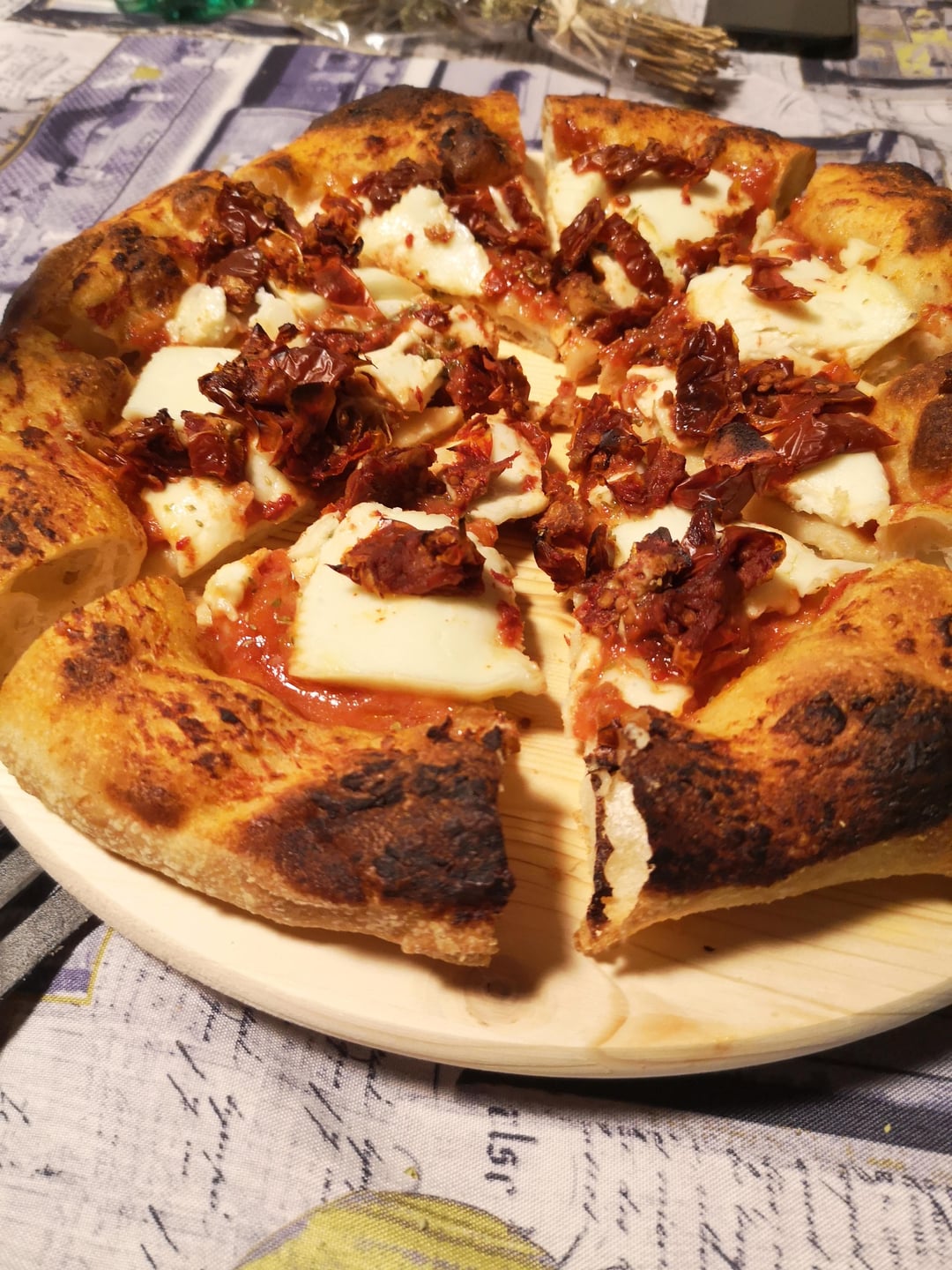
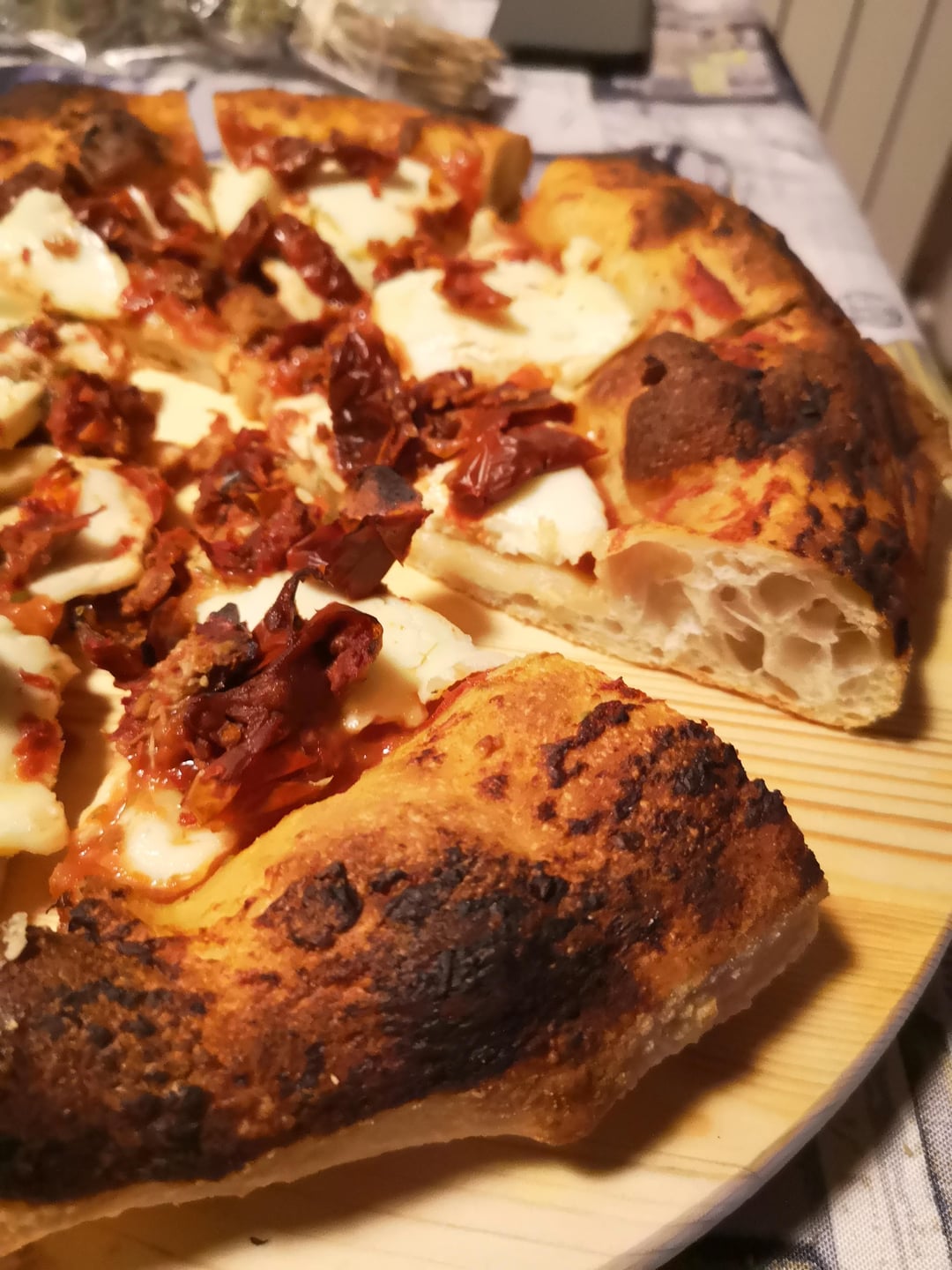
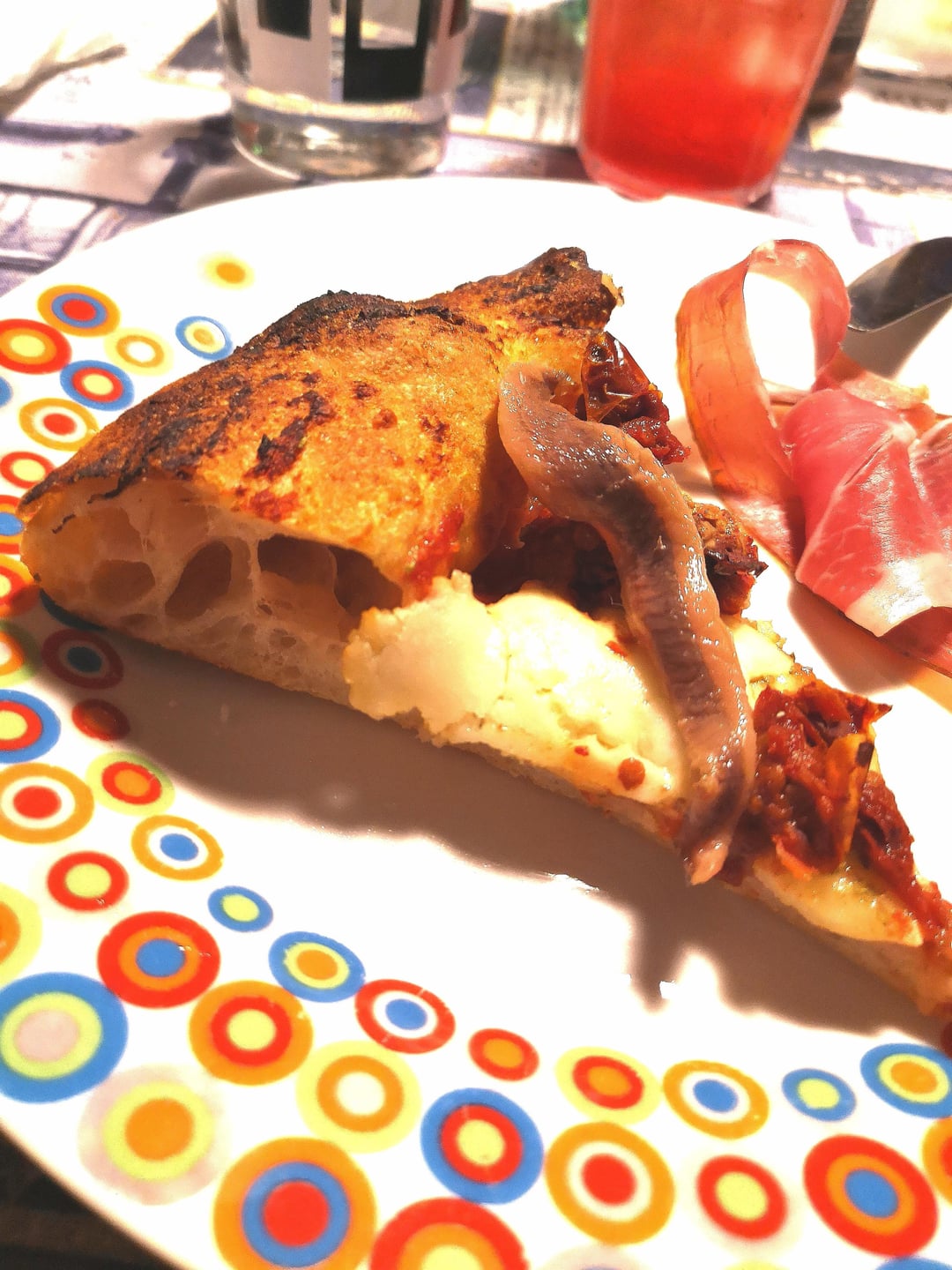
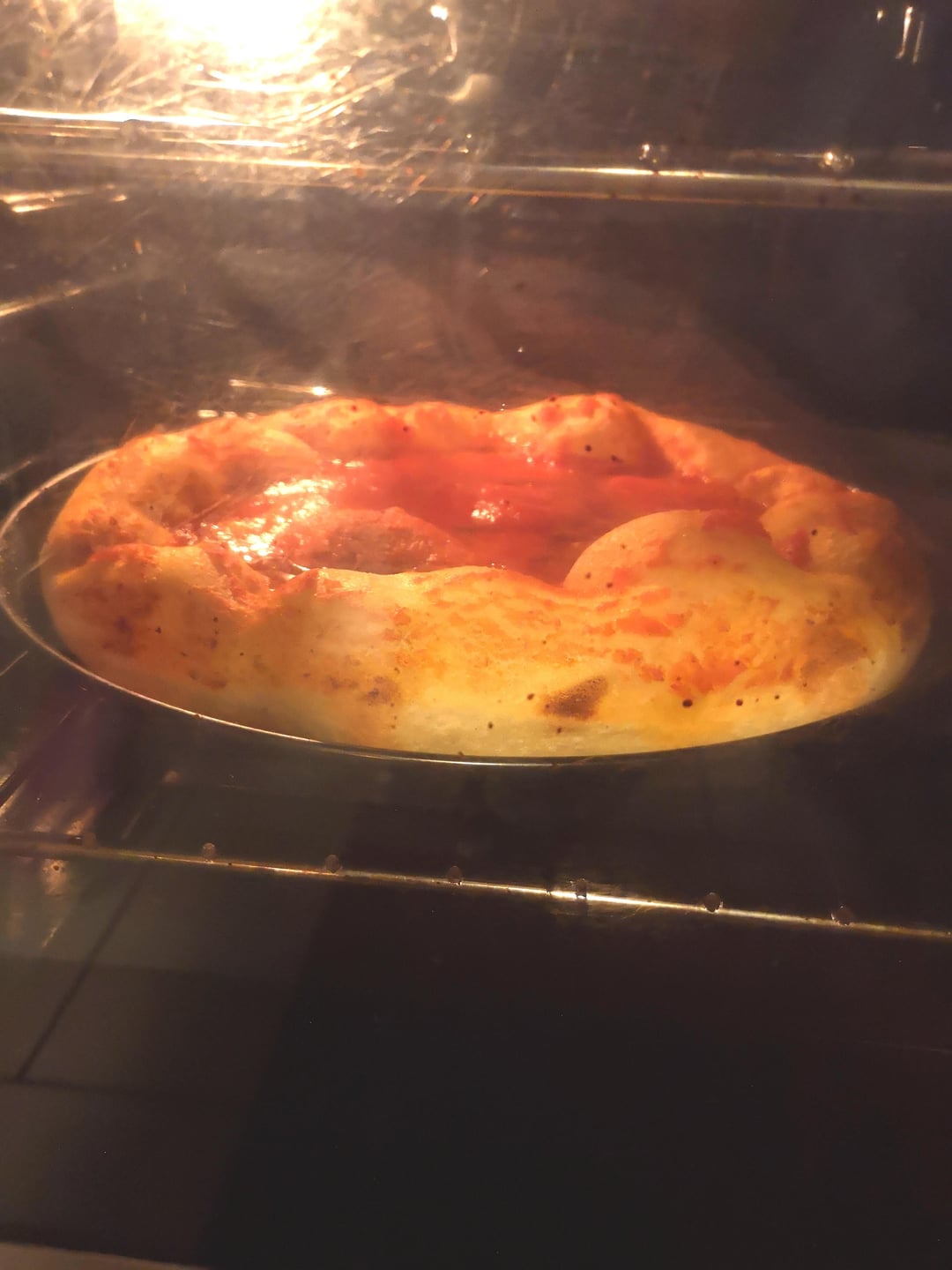
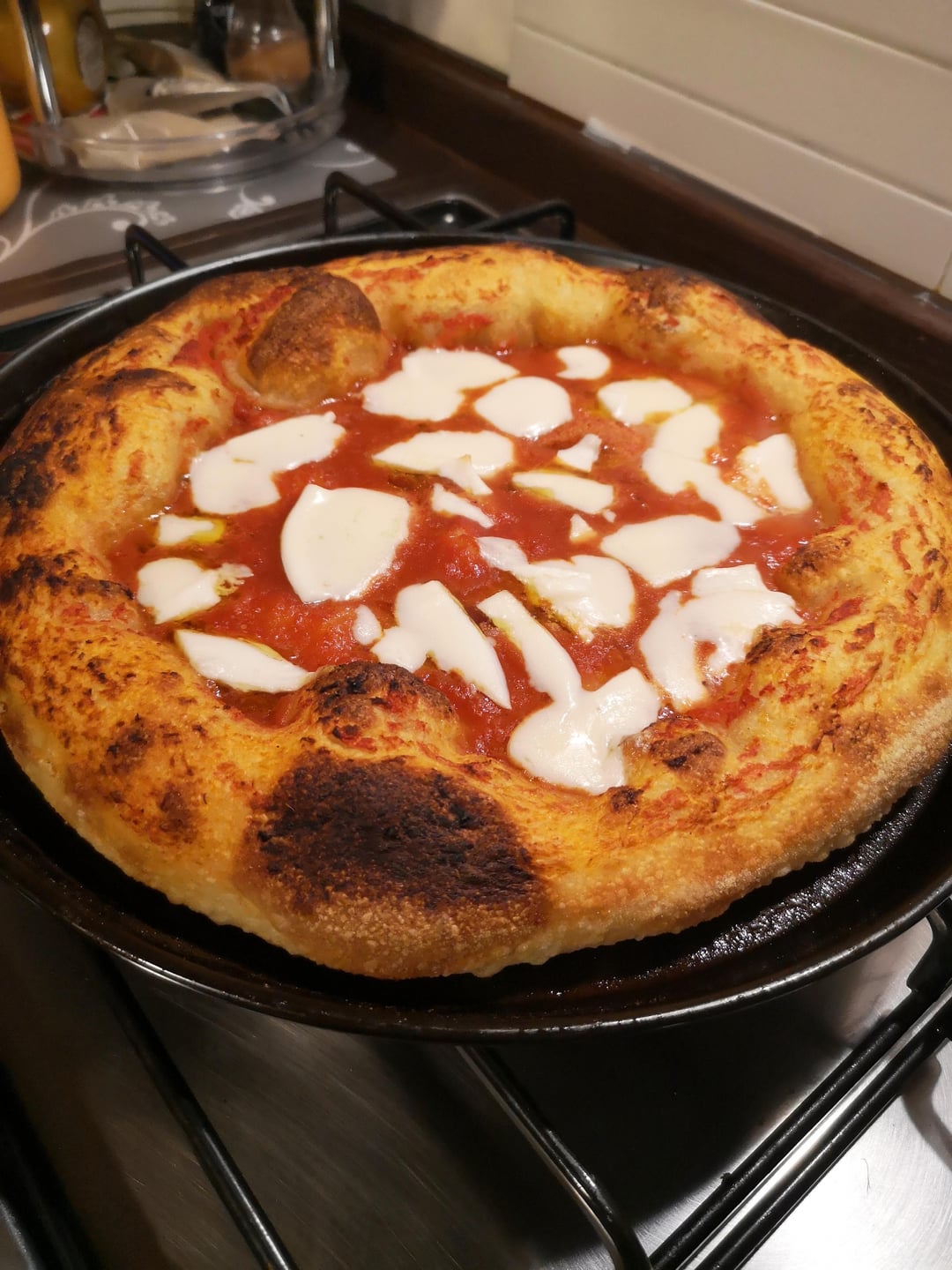
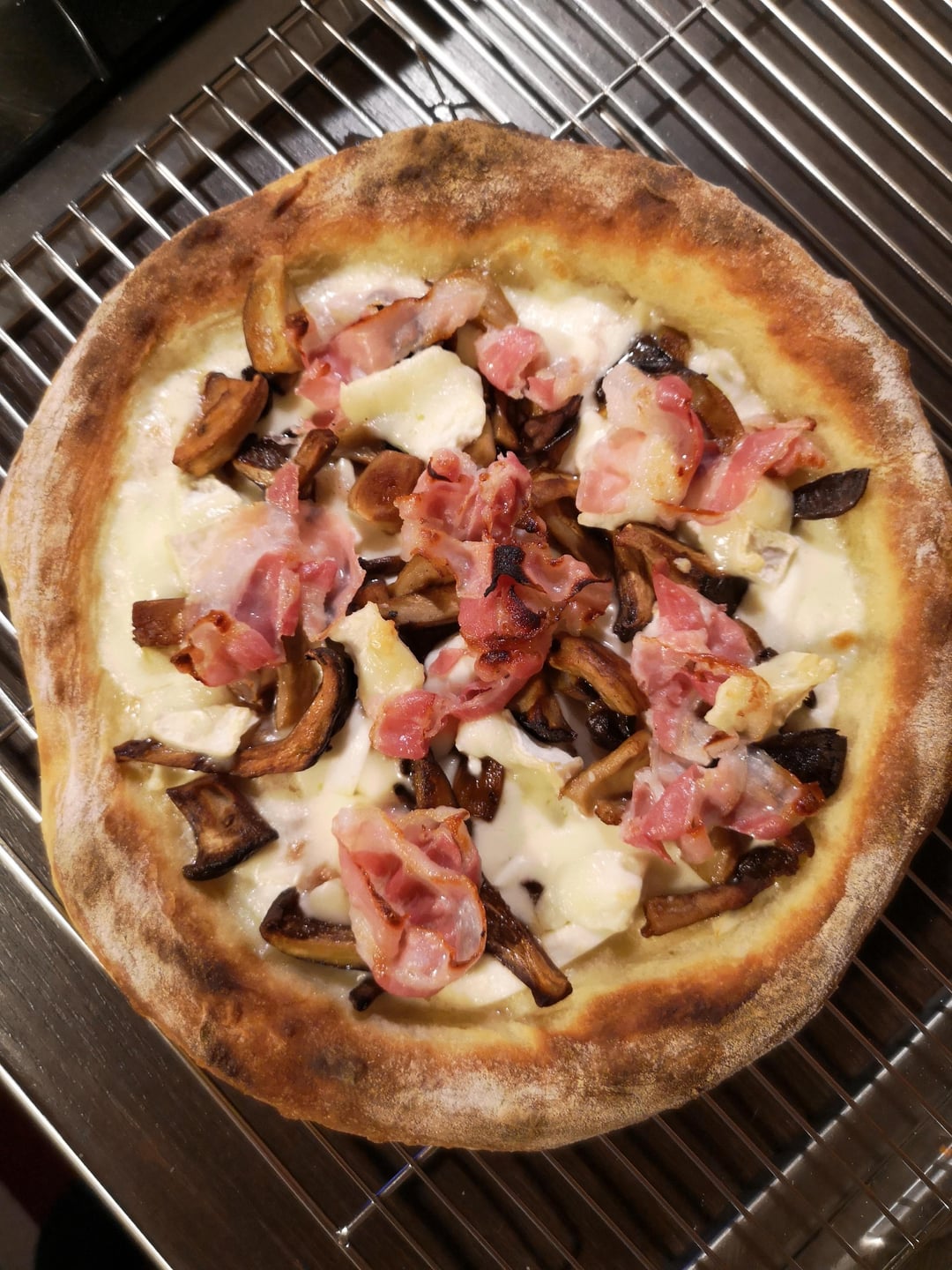
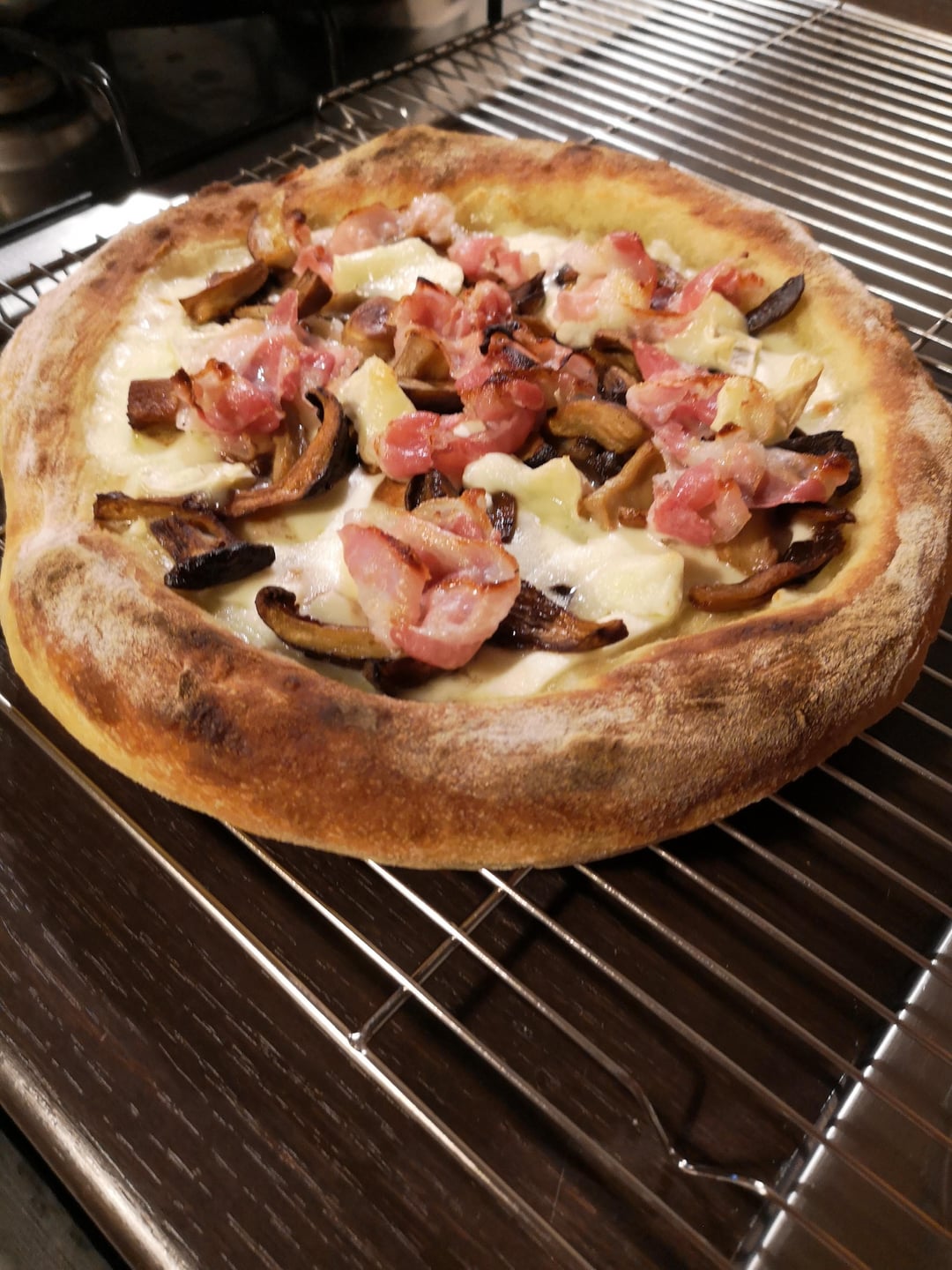
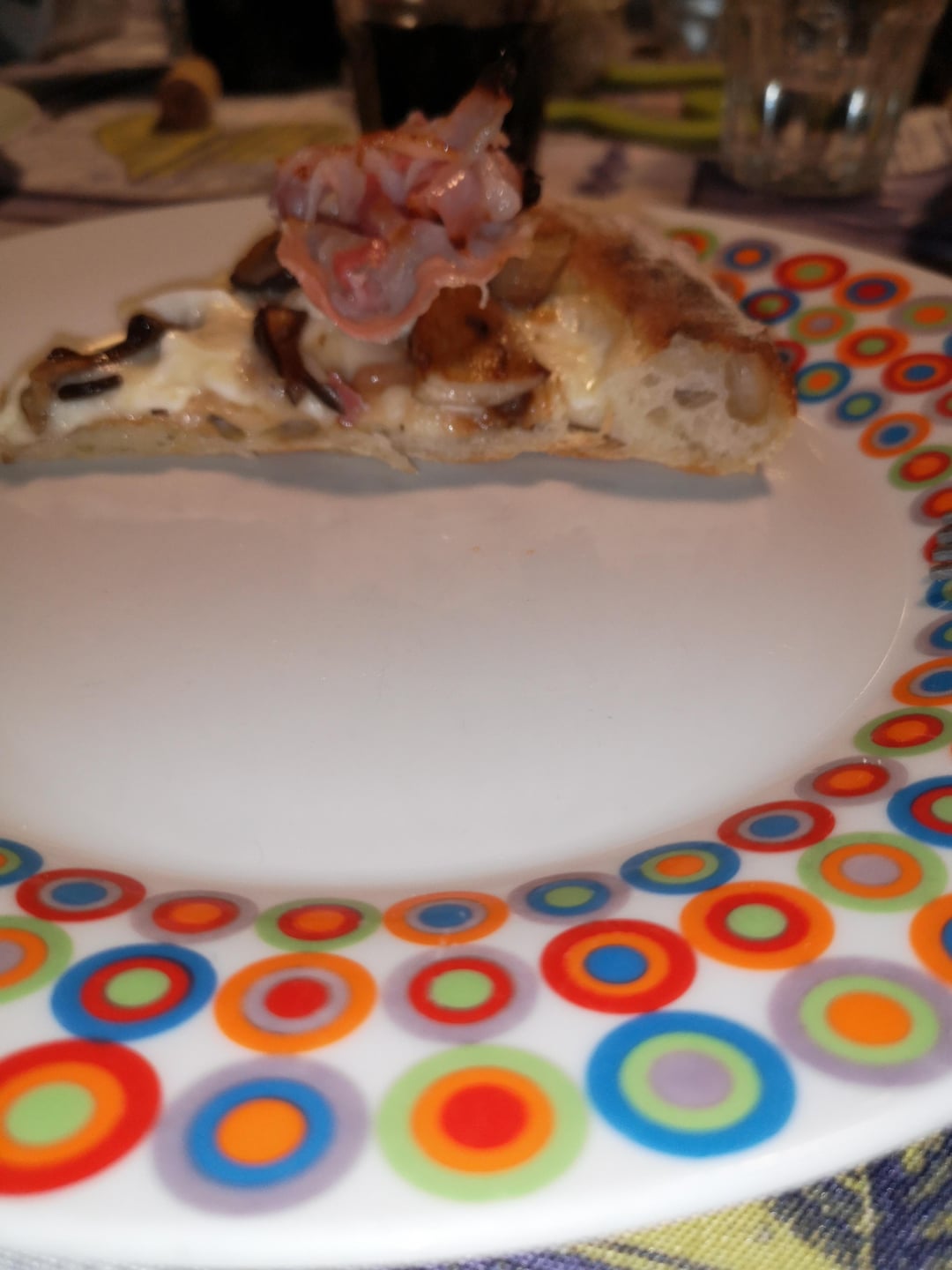
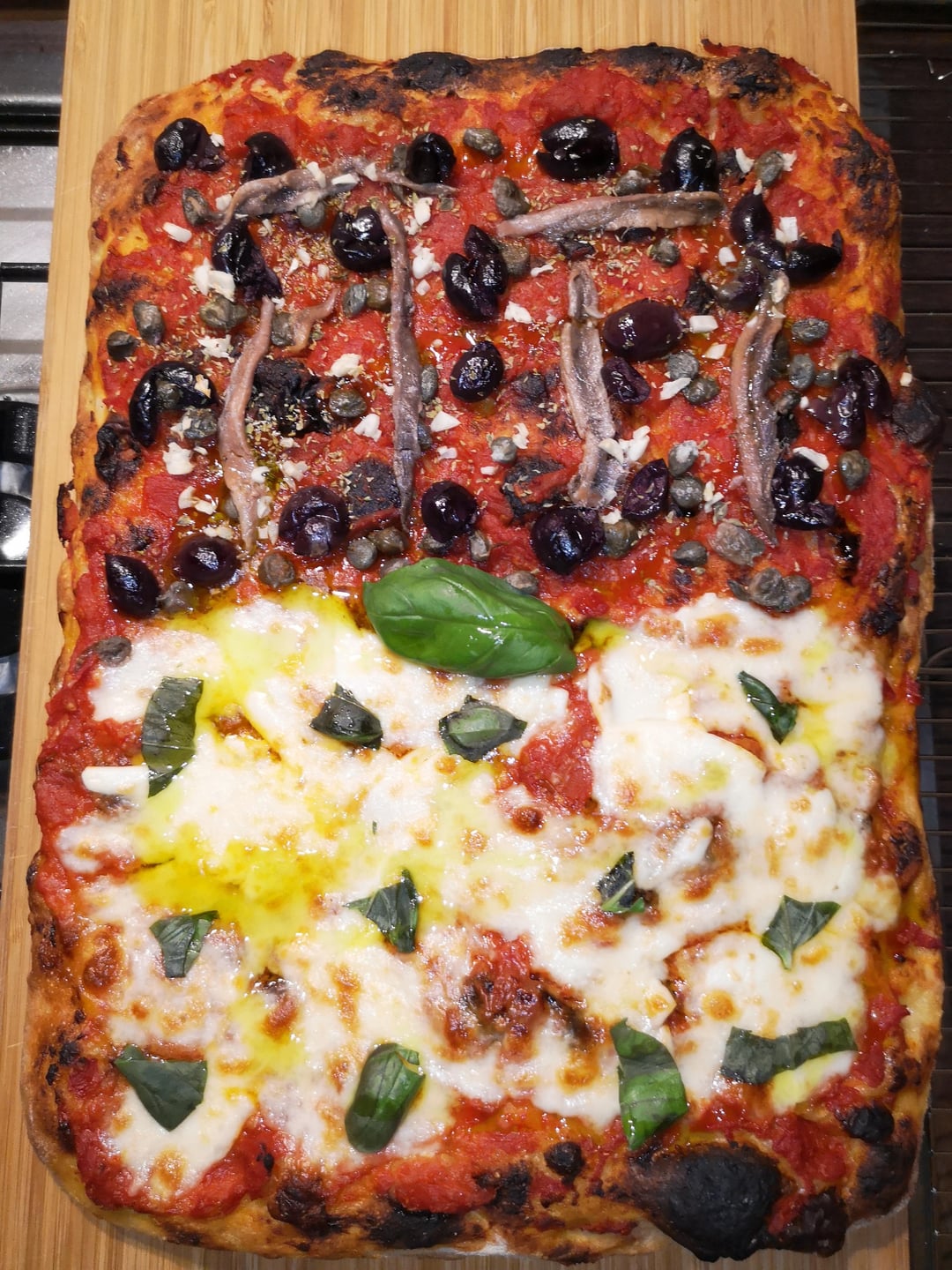
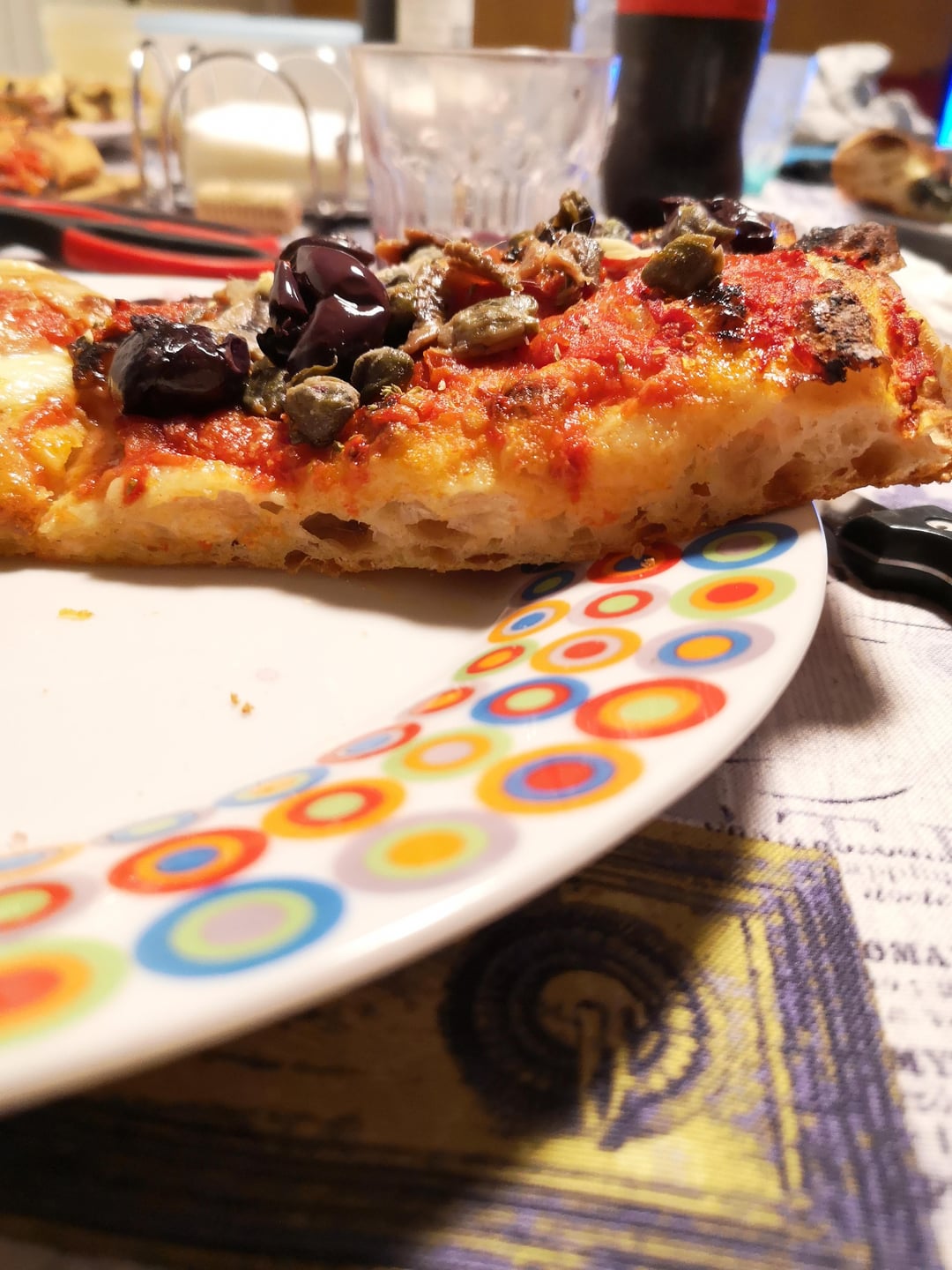

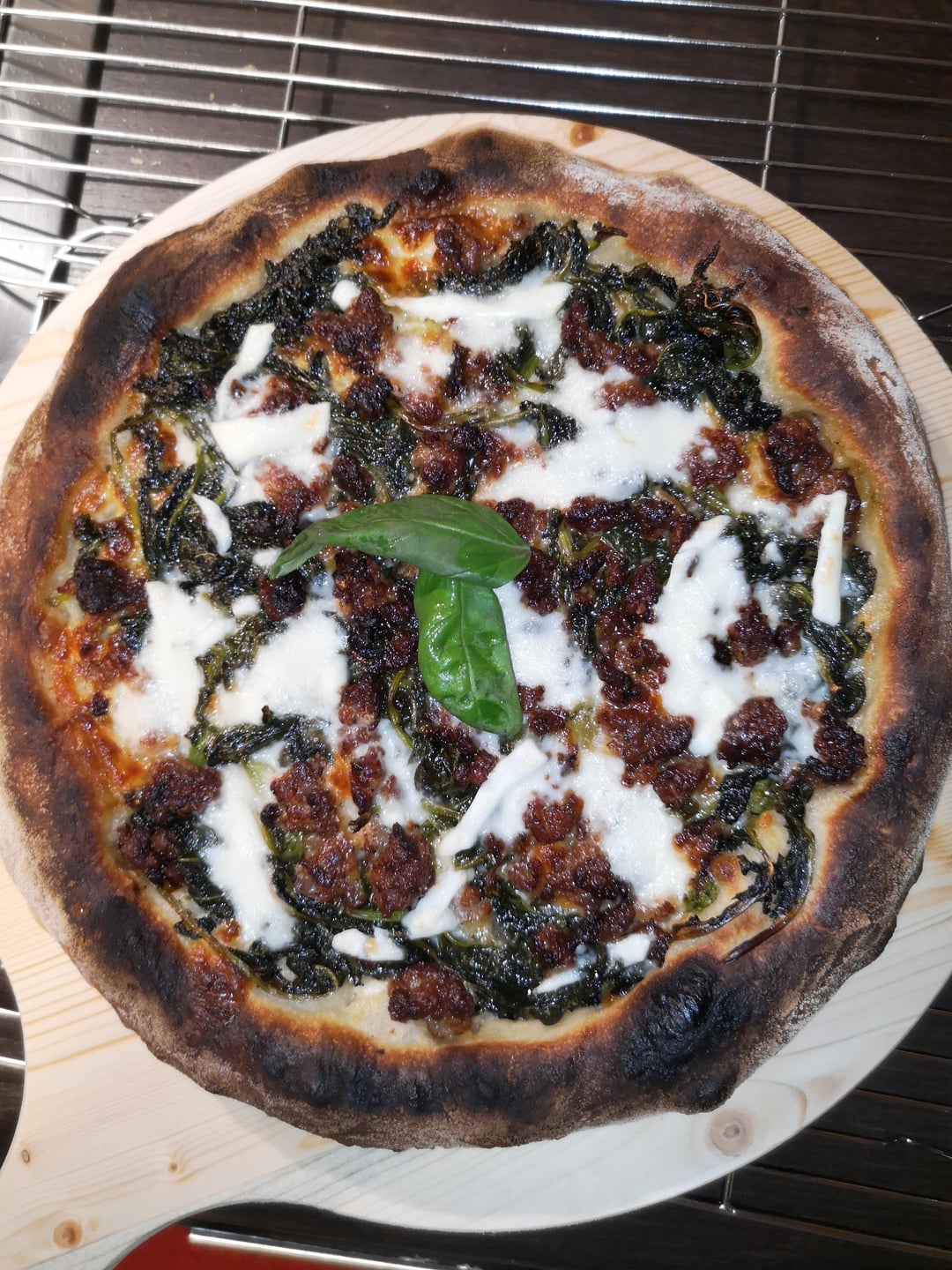
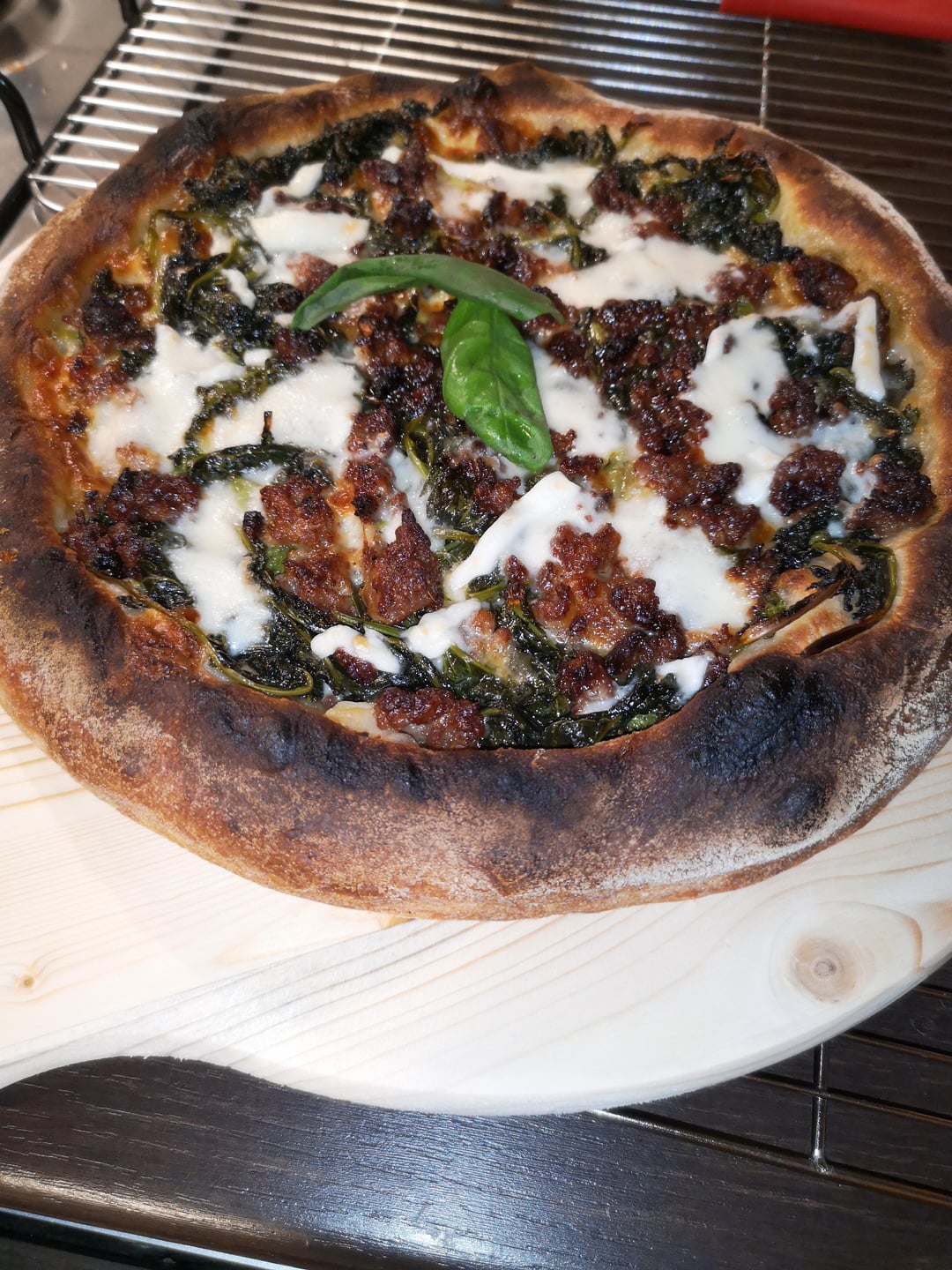
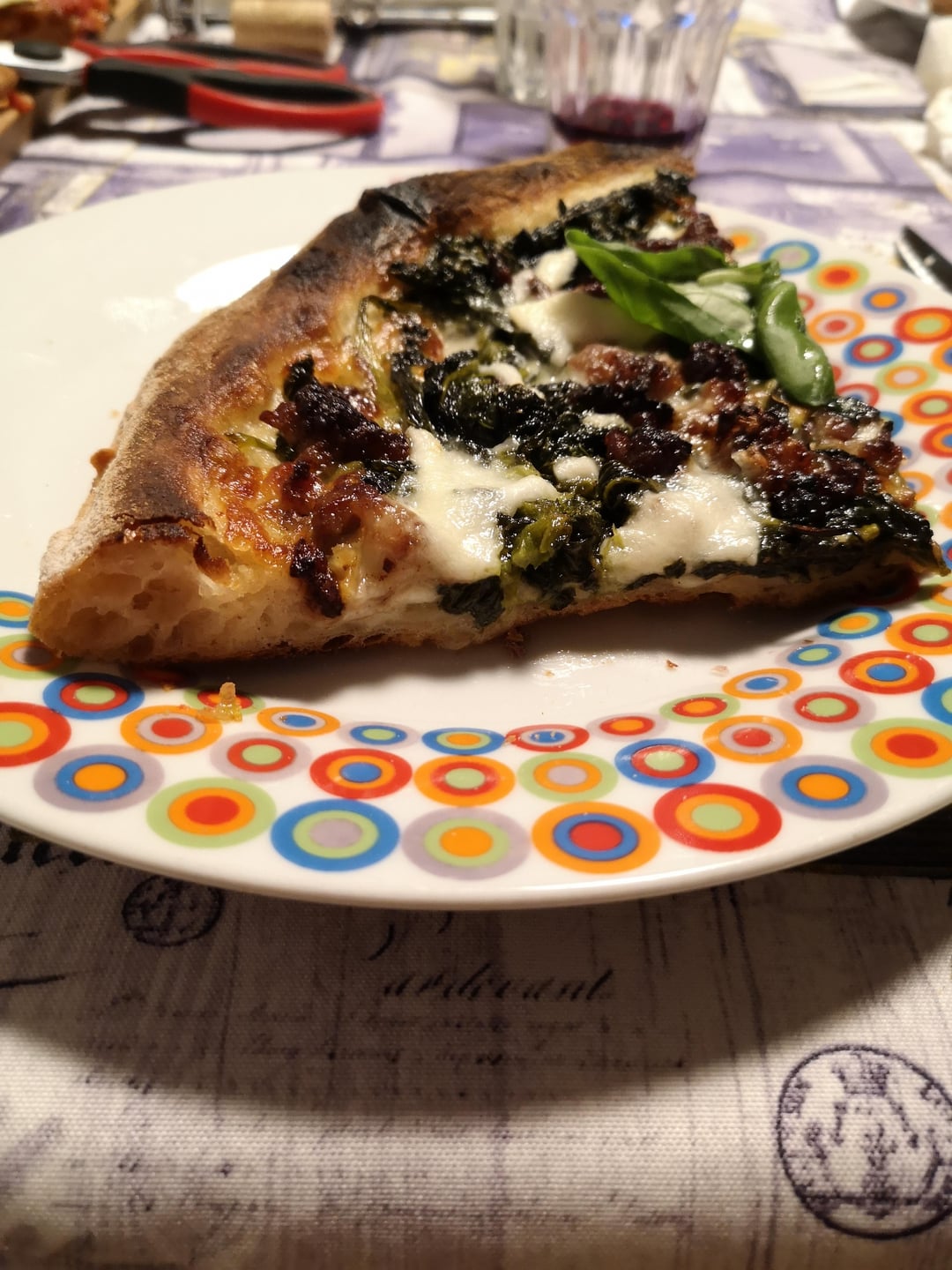
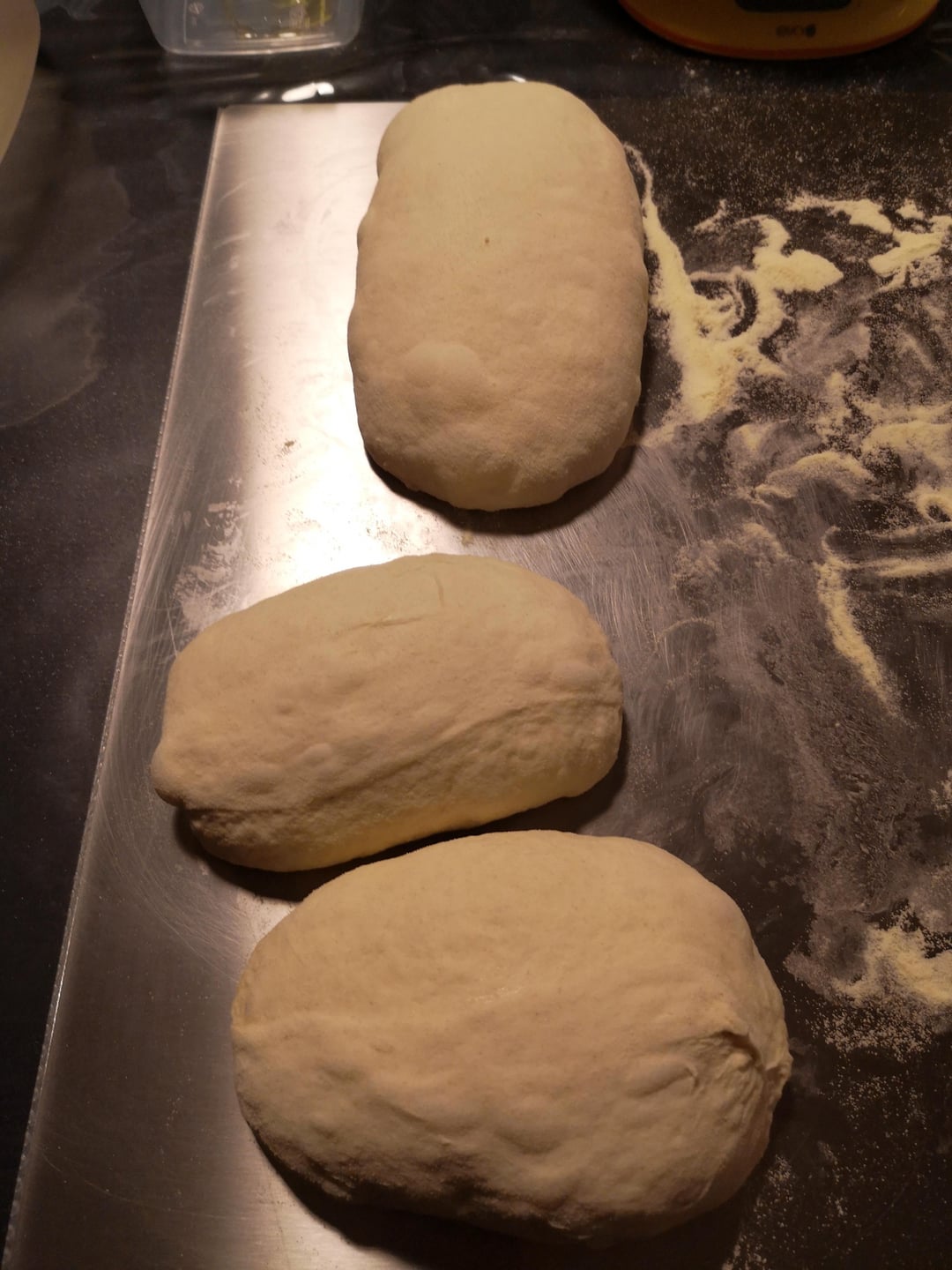
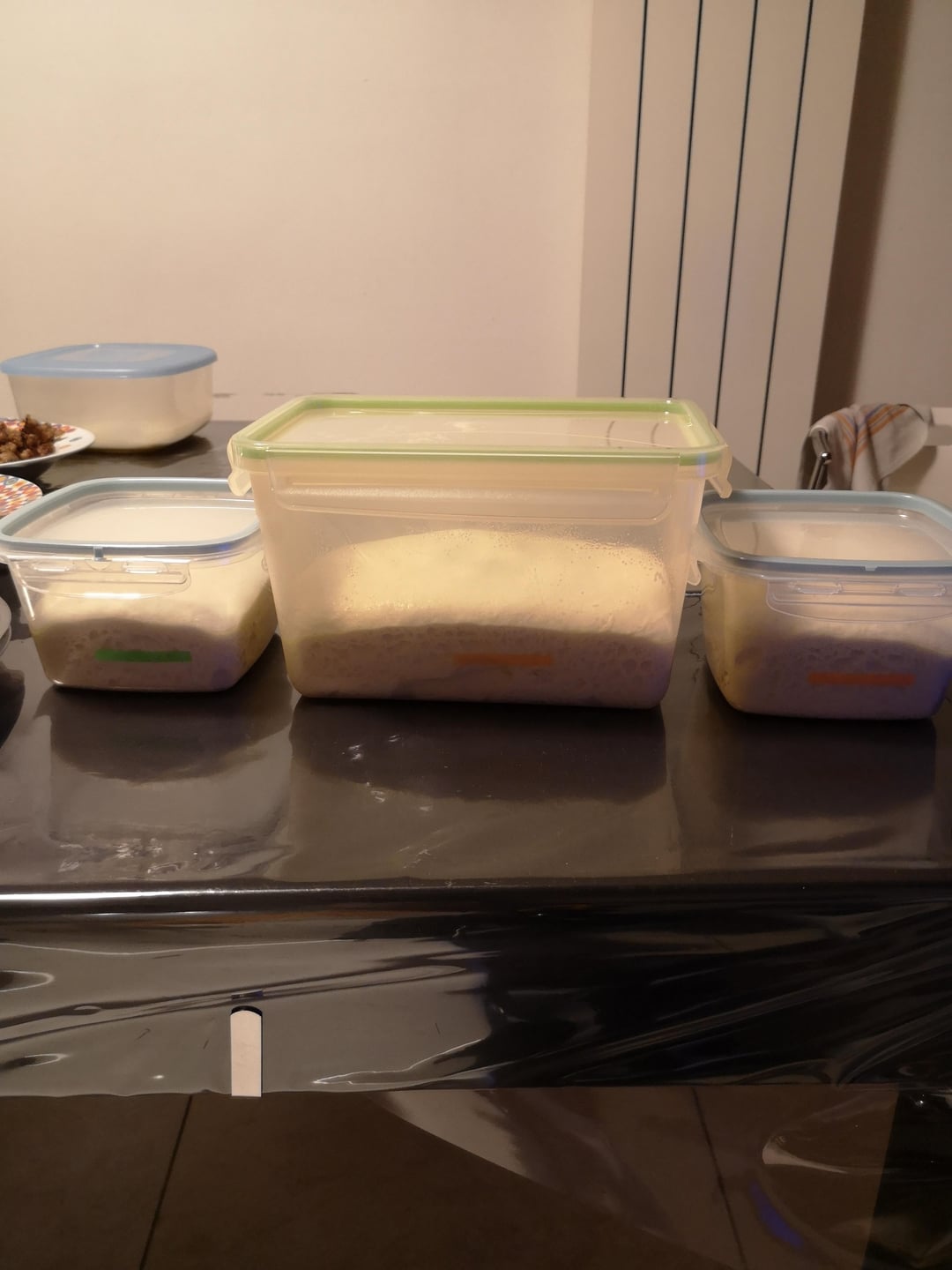
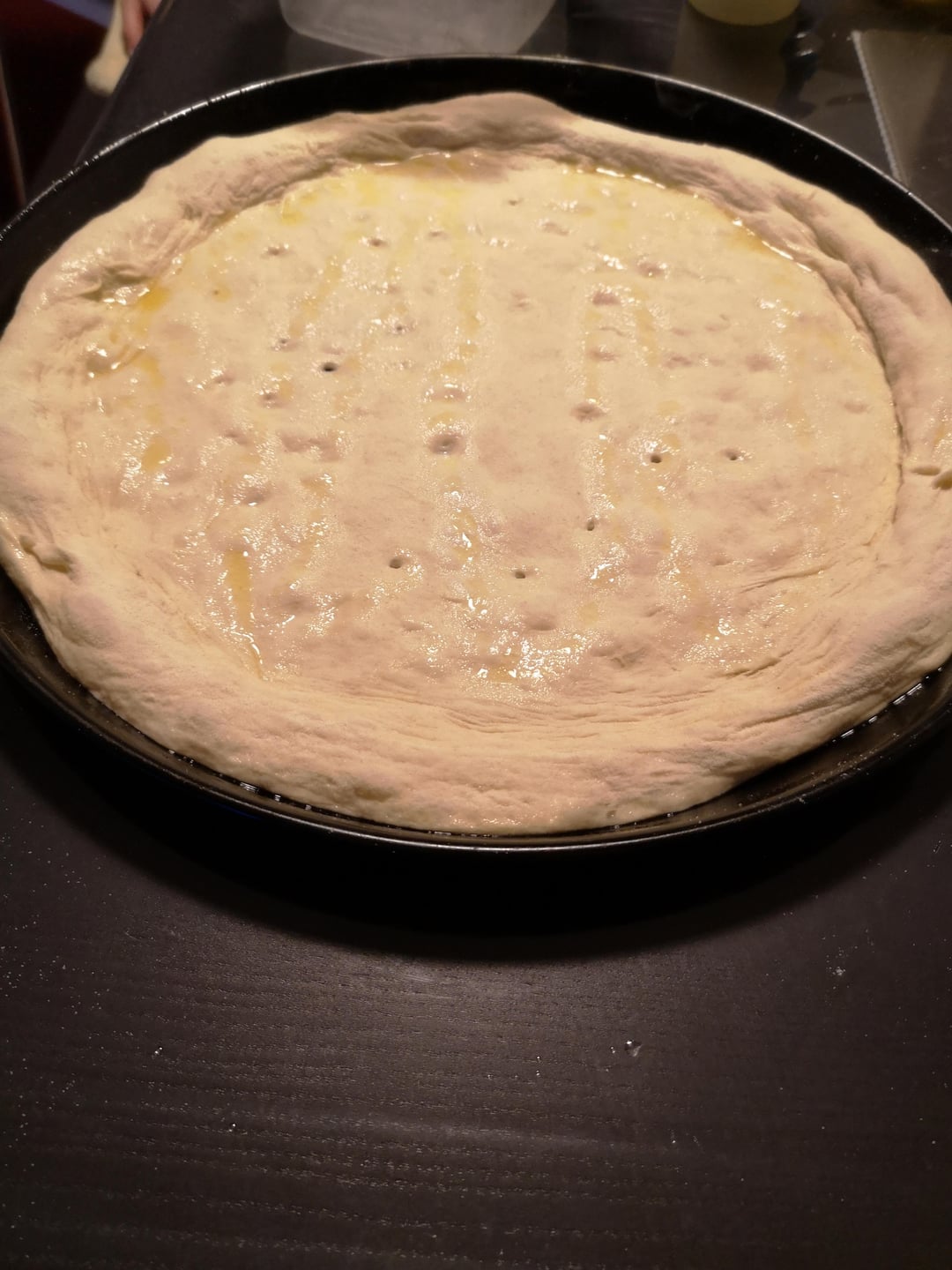
I don’t know if my post fits here, but since I took inspiration from and adapted a recipe for a contemporary Neapolitan pizza, maybe I thought it would be fine. Sorry in advance if it’s not.
And I also would like to bake some pizzas made with this recipe the next time I get to use a wood fire oven, maybe lowering a little the hydration.
I made this post to show that, obviously, the baking process represents the greatest of the result. I kneaded the doughs by hands.
Anyway, I used the same recipe for all the pizzas shown. The only differences are that for the pizzas in the last pictures I added the diastasic malt and I made an even better dough, referring for example to the fermentation, the smoothness and firmness.
The real difference resides on the baking process: without and with a lavic stone, but using for both blue iron pan and a domestic oven which reaches a max temperature of 260 ° C. And I even measured the temperature reached from the stone, which was 263 ° C, the same temperature reached in other sessions.
The first pizza was baked without the stone, first on the lowest part of the oven, on the oven rack, then on the second highest part.
The other pizzas were baked using the stone, placed on the oven rack in the medium part of the oven, and without moving their position.
To sum up, I am in fact not quite happy with the results of the last pizzas. I even, for my taste, overcooked one of the pizzas. Ah, I made the other pizzas last night.
I really like the recipe that I adapted for me and, since I mixed 3 flours, I know that the dough requires a great management of the temperature and the baking process. I even made bread last night, with the same dough I used for the last pizzas.
So, I’ll keep trying, hoping I can use my parents wood fire oven soon.
**PIZZAS**
With reference to the pictures:
**1, 2, 3, 4, 5** same pizza, baked without the stone.
Toppings: tomato sauce, fiordilatte, primosale cheese (sheep milk), dried tomatoes oregano and anchovies on the slices.
All the following pizzas were baked using the stone
**6, 7, 8**
Toppings: fiordilatte, pancetta, mushrooms (cardoncelli), goat cheese.
**9, 10, 11**
Half Margherita, half Marinara.
Toppings for the Margherita:
Tomato sauce, fiordilatte, parmigiano, basil.
For the Marinara: tomato sauce, oregano, olives, capers, minced garlic and anchovies added on after baking.
**12, 13, 14**
Similar to “Salsiccia e friarielli”, an iconic Neapolitan pizza
Toppings: fiordilatte, scamorza cheese, fresh sausage and green turnips.
**RECIPE**
– 1 kg of a Flour mix (00, strong type 1, and semolina)
– 800 g of Water
– 10 g of Fresh yeast
– 25 g of Salt
– 20 g of extravirgin olive oil
First I made a preferment mixing the flours with 650 g of water and the 10 g of yeast. I let it fermentate in the fridge for about 18 hours.
Then, I added the rest of the ingredients, adding first the water slowly, until I reached almost the 80 % hydration, then the salt with the last water and lastly the oil.
After a series of folds and rest, I made the dough fermentate in bulk for about 16 hours.
The next days, I divided the bulk, cold right from the fridge, into pizza balls, which weighed 720 g the rectangular one and 400 g the round ones.
They took about 2 hours to rise and be ready to be baked.
At the end of the gallery some pictures of the process 🍕
by burningchance
